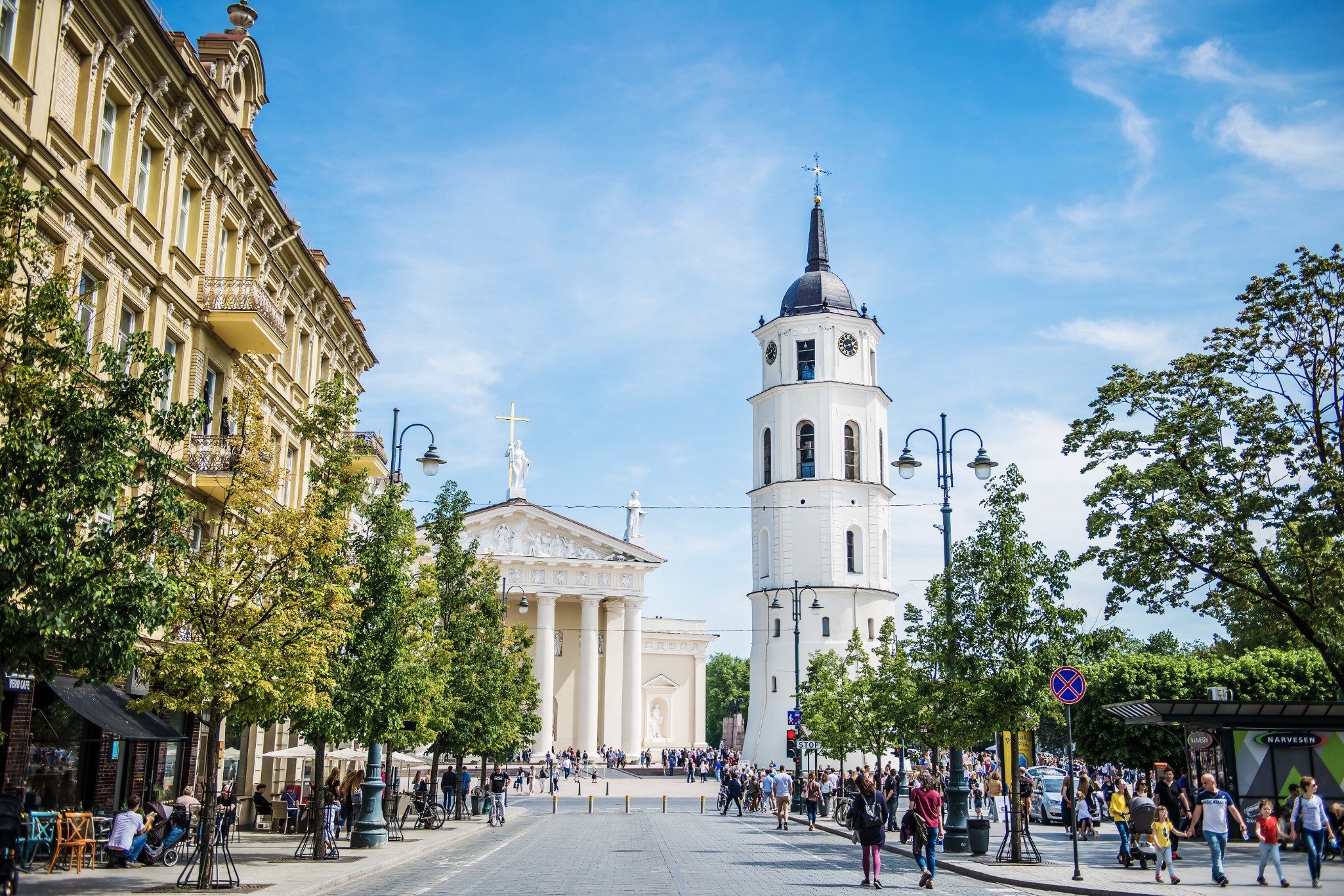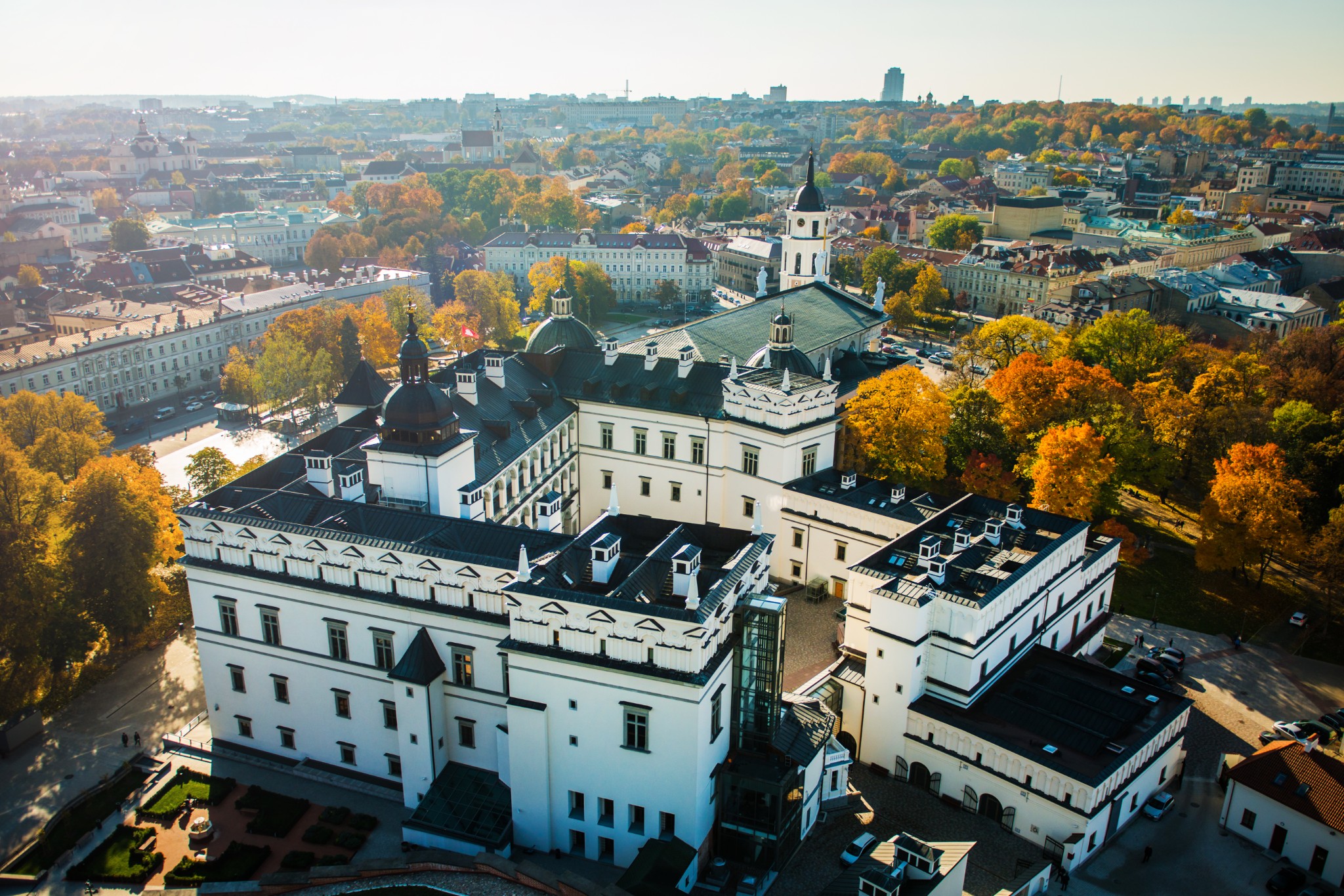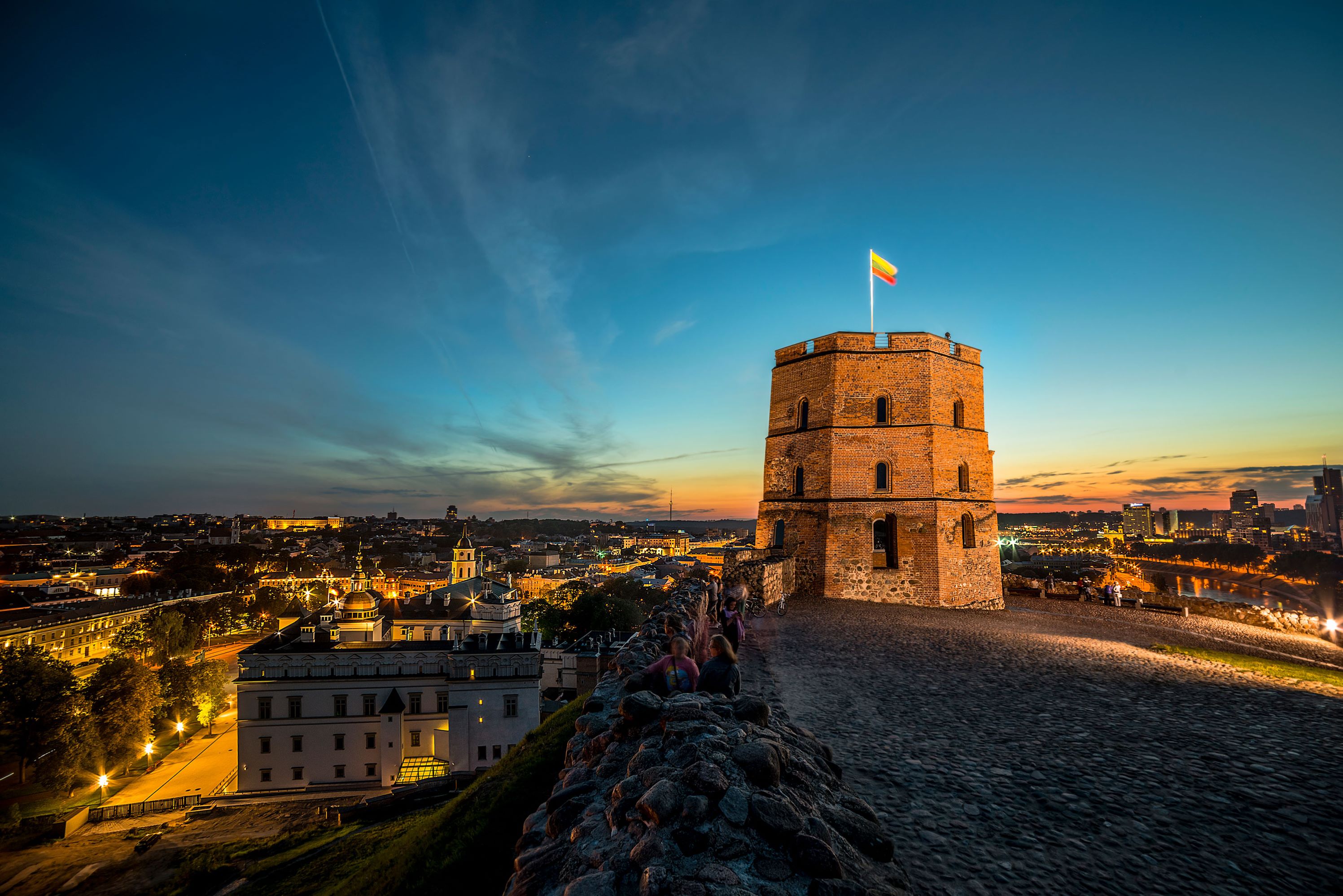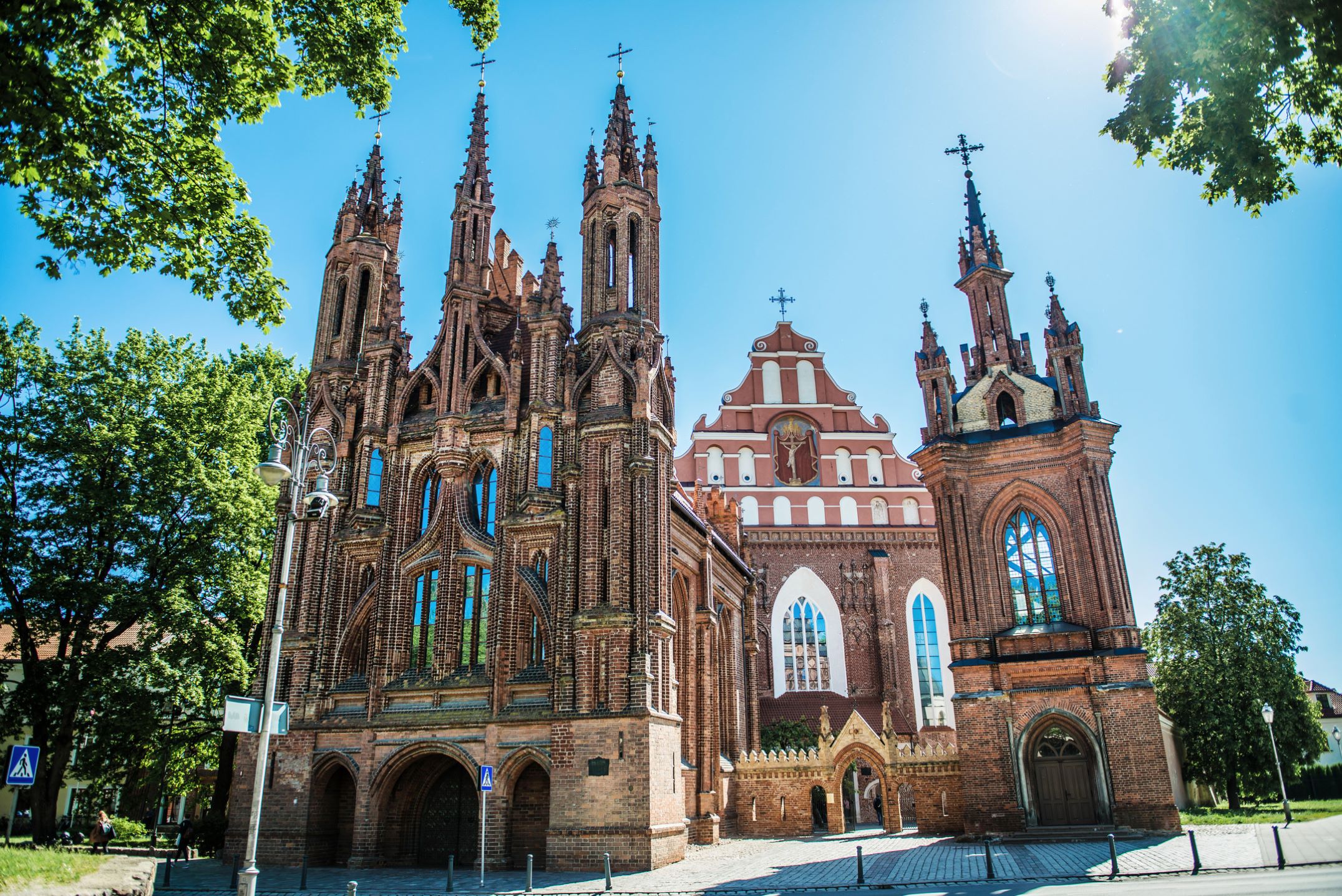Vilnius, as the capital of Lithuania, is the home of the President, the Seimas, the Government and the Supreme Court. Diplomatic missions, educational, cultural, financial, research, and healthcare institutions are based here.
Population: 569,700 inhabitants
Ethnic Composition: Lithuanians 67%, Poles 15%, Russians 10%, Belarusians 3%, Other 5%
Location/Territory: The capital city Vilnius occupies an area of about 400 sq. km of which 20.2% approximately is developed and the remainder is green belt (43.9% approx.) and water (2.1% approx.).
Language: Lithuanian
Religion: Roman Catholic 77.2%, Russian Orthodox 4.1%, Old Believer 0.8%, Evangelical Lutheran 0.6%, Evangelical Reformist 0.2%, other 0.8%
Government: Mayor
Currency: Euro
Local Time: GMT + 2 hours (EET), GMT + 3 hour (summer time)
Working Hours: Governmental institutions work from 8 a.m. to 5 p.m. Monday to Friday. Shops are usually open from 10 a.m. to 6 p.m. or 7 p.m. on weekdays and until 3 p.m. or 4 p.m. on Saturdays. Shopping malls are open all week from 10 a.m. to 10 p.m. Supermarkets are usually open between 8 a.m. and 10 p.m., and some supermarkets are open until midnight.
For more information: HERE
The Cathedral Basilica of St. Stanislaus and St. Ladislaus
 The Cathedral of St. Stanislaus and St. Ladislaus is the most important place of worship for Lithuania’s Catholics, and the venue for the country’s main Christian and national festivities. In 1922, the Cathedral was granted the title of ‘Basilica’, by Pope Pius XI.
The Cathedral of St. Stanislaus and St. Ladislaus is the most important place of worship for Lithuania’s Catholics, and the venue for the country’s main Christian and national festivities. In 1922, the Cathedral was granted the title of ‘Basilica’, by Pope Pius XI.
Many key figures in Lithuanian history are buried in the Sovereigns’ Mausoleum, which is located beneath the chapel of St. Casimir. Its vaults contain the remains of Vytautas the Great, the Grand Duke of Lithuania, and King Alexander of Poland. The vaults are not only restricted to kings, either – the two wives of Žygimantas Augustas, Queen Elisabeth of Austria and Queen Barbora Radvilaitė. The cathedral containing the ashes of King Vladislovas Vaza (Wladyslaw Vasa) are also buried here.The Cathedral’s original temple dates back to between the 13th or 15th century.
The Palace of the Grand Dukes of Lithuania
 The reconstructed Palace of the Grand Dukes of Lithuania, the former political, diplomatic, cultural center of the State, was one of the most famous in Europe in the 15th–17th centuries and was demolished in the beginning of the 19th century.
The reconstructed Palace of the Grand Dukes of Lithuania, the former political, diplomatic, cultural center of the State, was one of the most famous in Europe in the 15th–17th centuries and was demolished in the beginning of the 19th century.
This Palace is excellent located just in the heart of Vilnius, within the confines of Lower Castle. Nowadays the Gothic, Renaissance and Early Baroque halls of this multifunctional Museum are ideally applicable to organize a different size and content public events, official visits, conferences, meetings, seminars, concerts, performances, receptions and other.
The Gediminas’ Tower

Gediminas Castle Tower is the symbol of Vilnius and it is visible from many spots in the Old Town and is portrayed in numerous works of art.
It is one of the best places to see the magnificent panoramas of Vilnius. Climb Gediminas’ Hill and admire the sunset or go up even higher to the top of the Gediminas Tower for more spectacular views. The red roofs of Vilnius, the church towers, and the narrow streets of the Medieval Old Town are a stunning sight.
The tower houses a historic exhibition displaying reconstruction models of the castles of Vilnius, an armament, and iconographic material of old Vilnius.
Church of St. Anne and Bernardine Complex
 Barcelona has the Sagrada Familia and Vilnius has the Church of St. Anne. The church has remained almost unchanged over the last five centuries and is one of the most beautiful and probably the most famous buildings in Vilnius. It is a masterpiece of late Gothic architecture and is surrounded by many legends. The most famous of them recounts how Napoleon wanted to take the church back with him to Paris in his palm.
Barcelona has the Sagrada Familia and Vilnius has the Church of St. Anne. The church has remained almost unchanged over the last five centuries and is one of the most beautiful and probably the most famous buildings in Vilnius. It is a masterpiece of late Gothic architecture and is surrounded by many legends. The most famous of them recounts how Napoleon wanted to take the church back with him to Paris in his palm.
Next to the church stands a bell tower built in the 19th century, imitating the Gothic style.
